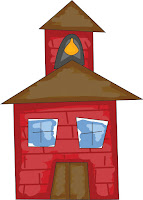Le petit chaperon rouge
Le petit chaperon rouge
We have been reading "Little Red Riding Hood" stories in class. It is a familiar story which helps the kids to build their French vocabulary by listening to a familiar story. They link the new words they hear to what they already know in the story which lends itself to greater understanding.
We have read different versions of the story from the library here at school. You may see some of those versions come home tonight in the book bags. Also coming home tonight is a version of the story that most of the children can read. I hope you enjoy listening as your child shares the story.
 |
| The story maps |
The children had a chance to write their own story about the forest or a version of "Little Red Riding Hood" using the vocabulary up in the classroom. We also made story maps of the story and they retold the story to a partner using the maps.
They are experimenting with logic and coding. They are using a board set up as the forest, to plan the route from Little Red's house to her Grandmother's home. The children then have to test the route to see if they were successful. They will start to have a turn at this activity tomorrow.
 |
| The route to Grandma's house |
Patterns
We continued working with patterns this week. The children made patterns and then had their friend write out the name of the patterns. All patterns can be named with letters of the alphabet. The next day, the children made patterns with a deliberate mistake in them. Their partner had to come and find the error and fix it. They had a lot of fun with this activity!
We are now working on making patterns in non-linear shapes such as wavy lines, in circles, triangles etc.
What you can do at home:
- Read, read, read to your child. They learn so much about language and reading when they hear an adult read to them.
- Continue to do the homework as many days as possible during the week. The small sounds in the homework helps the children to isolate sounds when they are reading. It also helps them to begin to spell more accurately.
- Look for words with pP, tT and rR in them as you read with your child.
- Find a pattern at home and ask your child to tell you its name. Make mistakes with patterns as we did in class.




